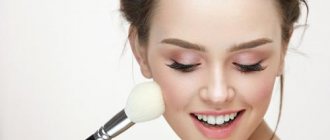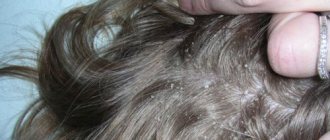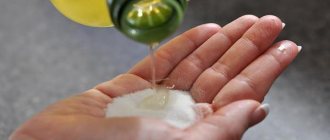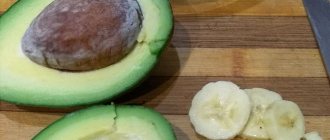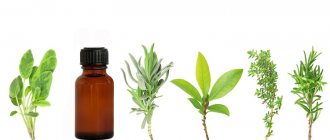Medical reasons ↑
Quite often, many women and men experience certain unhealthy manifestations on the neck: peeling, spots, rashes, premature formation of wrinkles, redness and dryness.
Let's try to analyze in detail the causes and possible solutions to just such a problem as redness and dryness of the skin on the neck: erythema, lichen, ichthyosis, dermatitis, fungal infections, eczema, diabetes.
This is a short list of diseases, one of the symptoms of which may be redness and even itching. However, there are a number of other reasons and factors that lead to similar phenomena on the neck and face.
To accurately weed out serious health problems and focus on cosmetic techniques and medications that will relieve symptoms and bring your skin into complete order, you will most likely have to visit specialists such as an allergist, dermatologist, infectious disease specialist, neurologist, who will find out the causes and They will prescribe treatment or send you to a beauty salon.
Physiotherapy for dry skin
Another way to treat dry skin is physical therapy. There are 3 types of therapy.
Mesotherapy of facial skin for its restoration and rejuvenation
Physiotherapy for dry skin:
- Mesotherapy. This is an injection enriched with microelements: potassium, magnesium, sulfur, comfort, zinc, selenium to nourish the skin, restore it and regulate the metabolic process.
- Skin biorevitalization. Such preparations are based on hyaluronic acid. They not only moisturize the skin, but also normalize the condition of elastin and collagen fibers.
- Microcurrent therapy. It consists of ten procedures that regulate lymphatic drainage and blood circulation. Acts due to small electromagnetic waves, neutralizing the causes of dry skin throughout the body
Allergies as the main cause of peeling skin on the neck
A common reason why the skin on your neck begins to peel is an allergic reaction to something.
At the slightest sign , the first symptoms will be immediately visible on the neck. This happens because the skin in this area is especially sensitive and thin.
There are many reasons that cause skin irritation.
This may be a reaction to certain foods (citrus fruits, chocolate), low-quality jewelry, medicines, plants, animal hair.
Dry body skin - prevention
There are several things you can do to keep your skin hydrated and healthy.
- Use moisturizer immediately after swimming.
- Humidify the air with a household humidifier.
- Wear clothes made from natural fabrics such as cotton and silk because they allow your skin to breathe. Wool, although a natural fabric, can sometimes irritate the skin.
- Use a detergent that does not contain dyes or perfumes.
- Drink a lot of clean water - moisturize your skin from the inside and then you will not need treatment.
Be healthy!
Hormonal changes that cause peeling on the neck
Peeling skin on the neck - the reasons may lie in hormonal imbalance, when the amount of hormones in the blood decreases. Usually the culprit of the problem in question is the hormone estrogen, which is responsible for the condition of the skin.
Changes in hormonal levels can occur in adolescence, during the restructuring of the body. During this period, adolescents' skin condition worsens, it becomes dry, and acne appears.
Estrogen levels also decrease during menopause.
This leads to the skin beginning to wither and peel.
Other causes of hormonal imbalance: menstruation, pregnancy, lactation.
Simple tips for caring for dry skin
Choose your facial cleanser wisely
Cleansing is the first and most important step in our skin care routine. This is very important, you need to choose a facial cleanser depending on your skin type. For people with dry skin, choosing a face wash can be difficult, especially in winter. Almost every face wash leaves your skin dry, so use a gentle, cream-based facial cleanser. It should not be a foaming face wash as this will strip the skin of its natural oils and make the skin drier. Also avoid gel-based face washes because most of them are designed for oily skin. Thick, rich, cream-based facial moisturizers are best for dry skin, especially in winter.
Use a moisturizing toner
After cleansing comes toning, and here comes dry skin, people should be very careful. Go for hydrating toners, instead of astringent based toners. Astringent toners are mainly suitable for people with oily skin. Toners containing natural oils or essential oils are ideal for people with dry skin.
Apply serum
Because dry skin needs extra hydration, opt for a serum before applying your regular moisturizer. The serum is sold in concentrated form, but is able to penetrate much better than our regular moisturizers. The serum penetrates deep into the layers of the skin and provides an additional level of hydration, as well as protection against external factors.
Hydration is a must
Just because you've applied a serum doesn't mean you can skip your moisturizer. Moisturizer is essential for caring for dry skin not only in winter, but all year round. Choose a non-comedogenic moisturizer to eliminate the risk of acne. While you can use a lightweight moisturizer for summer and other times of the year, winter calls for a light-duty moisturizer because our skin quickly loses moisturizer in dry, cool weather.
Exfoliation is the key
Exfoliation is very, very important for all skin types. Our skin regularly sheds dead cells and these accumulate on the outermost surface of the skin. Exfoliation helps loosen these dead skin cells and ultimately leads to their removal. Dry skin actually sheds dead skin cells at a faster rate compared to other skin types, which is why exfoliation is essential for people with dry skin. You will get many face scrubs in the market and you can also prepare your own scrub at home. If you don't exfoliate regularly, dead skin cells end up blocking skin pores and preventing skin nourishment and moisturizing products from penetrating and repairing skin damage. When we clean off these dead skin cells, our skin can breathe and also absorb moisturizer or other skin nutrients.
Pay attention to night skin care
After all, most of us feel very tired and want nothing more than to put our heads on the pillow as soon as possible, and we simply avoid skin care at night. However, nighttime skin care is extremely important. At night, when we sleep, our skin rejuvenates and restores itself. And a nourishing night cream can enhance the effect and help you wake up with soft, glowing skin. Dry skin is more prone to premature aging because lack of moisture makes it an ideal environment for wrinkles and fine lines to appear. Therefore, it is important for people with dry skin to start anti-aging skin care at an early stage. Invest in a night cream that contains vitamin A or retinol, which is a very powerful anti-aging ingredient. Vitamin A increases sebum production, which is effective in treating dry skin as well as preventing wrinkles and other signs of skin aging.
Drink more water
Staying hydrated from the inside is very important if you want to avoid dry and rough skin. When our body suffers from dehydration, it shows up on the skin in the form of dry patches or rough skin. So drink plenty of water to stay hydrated from the inside out. Also, add water-rich fruits and vegetables to your daily diet to replenish the water lost in the body. Also, make sure you are not suffering from nutritional deficiencies. Often, lack of vitamins can make our skin dry and rough, so it is important to eat a diet rich in vitamins to maintain soft, glowing and healthy skin.
These were some of the simplest dry skin care tips. Now we will talk about how you can use easily available natural ingredients to restore your skin texture and get rid of dryness for good.
Dysbacteriosis and peeling of the skin on the neck
Sometimes the cause of peeling skin on the neck can be problems related to the gastrointestinal tract.
Typically, this condition occurs when the intestinal microflora is disturbed, which provokes the occurrence of dysbacteriosis.
With dysbacteriosis, all beneficial substances are washed out of the body, which primarily affects the skin. In addition, dehydration occurs due to fluid loss, especially with diarrhea.
How to beat dry skin
Initially, you need to determine the type of dry skin and the stage of drying of the skin.
You might be interested in: Secret recipes for women's beauty and health
There are two types of dry skin:
- Dryness with normal tone, when symptoms of dryness are present, but the skin still remains smooth and elastic.
- Dryness with poor tone. Such skin is characterized by the rapid appearance of cracks and wrinkles, and the skin itself is thin.
If the first type can be cured with folk remedies and special creams, then for the second one you need to use more complex, comprehensive treatment.
Now it is important to choose the treatment that is suitable for a particular woman, based on the individual characteristics of her body.
An excellent remedy for dry skin is a bath with flax seed, chamomile and honey.
Traditional methods of dealing with dry skin:
1.Special baths:
- Bath with flaxseed and chamomile. You need to pour a strained decoction into the water, consisting of one liter of water, several teaspoons of flax seed and chamomile. The tea leaves need to be boiled for a quarter of an hour and the same amount of time can be spent in the bath with this brew.
- Glycerin bath. Bath with glycerin. To do this, you need to pour 1/2 cup of glycerin (liquid) into the water.
- Bath with honey and milk. To do this: heat the milk, melt 200 grams of honey, slowly mix honey and milk, add 2 teaspoons of almond oil. Then pour the resulting consistency into the bath.
- Oatmeal bath. The oatmeal should be placed in cheesecloth, attached to a water tap so that the water flows through the bag. You need to lie in such a bath for about a quarter of an hour.
Therapeutic baths with herbal infusions are especially useful
2. Skin peeling. The second effective way to combat dry skin is peeling the upper layers - the epidermis. Peeling is easy to do even at home.
Facial peeling at home: before and after
To do this you need:
- Mix honey (preferably liquid), salt, vegetable oil at the rate of 4:1:1 tablespoons. Apply this mixture to your skin and wait 5 minutes. Afterwards, rinse thoroughly. Next, wash with clean warm water.
- Grind almonds and oatmeal using a food chopper or coffee grinder, add 2 tablespoons of sour cream and apply it all to the skin, wait 5 minutes and rinse. Wash with clean warm water.
3. Useful moisturizing and nourishing masks for dry skin care:
- Mix 2 tablespoons of honey and olive oil, apply to skin, leave for 20 minutes, wash.
- A solution of 200 ml of water (mineral) and 50 ml of milk, rub into the body for 15 minutes, then rinse.
- Mix the pulp of avocado, banana and cream (half a glass), butter 100 g. and a few drops of rose oil. Rub this mixture into the skin and leave for 15 minutes, then rinse.
- A mask of an oil solution (vitamin E) and water: any vegetable oil mixed with water will do.
A good face mask can be easily made at home
. Complex treatment:
- Diet: eat fruits and vegetables, nuts, beef, eggs, seafood, prunes, drink 2 liters of fluid per day.
- Quitting bad habits: smoking and alcoholism are contraindicated.
- Distribution of healthy sleep and rest.
- Physical activity in moderation.
- Moisturizing body skin.
Cosmetics and hygiene products:
- Use special moisturizing soap, soft towels and washcloths.
- For care you need: milk, mousse or gel; if lotion is used, it must be water-based and not alcohol-based.
- You can use micellar water as a cleanser.
- To soften and moisturize there are creams, gels and ointments that are made from fats, vitamins and plant extracts.
Dry patches on the skin
The skin (especially the epidermis, the top layer) is a super sensitive human organ that reacts to any disruptions in the body’s functioning. Red, brown, white dry spots on the skin are an alarming signal from the body about “problems” that require medical intervention.
Is their appearance dangerous?
The location of dry spots on the body varies individually: they appear on the skin of the arms, legs, stomach, back, buttocks, and groin area. The occurrence of such “surprises” on the skin of the face is especially unpleasant.
By appearance, dry spots are distinguished as white, red and dark (brown).
By structure they are:
- smooth (only the color of the epidermis has changed);
- rough, flaky;
- accompanied by itching of varying severity, rash, pustules.
Often people are in no hurry to see a doctor for such a “minor” reason. However, if the exact cause of the painful reaction is not known, you should not hesitate to visit the doctor.
You should be especially wary if the spots:
- grow in size;
- do not go away over a long period;
- the affected areas of the epidermis are itchy, inflammation and ulcers are noticeable;
- similar ones appeared among people from the “contact circle” (household, friends, etc.).
You should pay close attention to the occurrence of dry dermatitis in young children, especially infants.
Causes
The reasons for the appearance of such pathologies are different. The main ones include:
- reaction to the sun;
- lack of substances necessary for the body (vitamins, microelements, protein, carbohydrates, fatty acids, etc.), dehydration;
- skin diseases (dermatitis, fungus);
- depression, stress, especially long-term;
- allergic reactions (regardless of the type of allergen);
- stressful effects on the skin - excessive dryness or humidity, critical temperature changes;
- a number of pathologies (for example, dysfunction of the stomach, endocrine system, liver, gall bladder, etc.);
- parasitic infection of the body (worms, helminths, roundworms, etc.);
- natural aging.
It is worth knowing that dry, rough spots on the skin sometimes accompany very serious diseases, for example, oncology. A timely examination by a doctor will never be superfluous.
Types of pathology
Dry spots that appear on the epidermis of an adult or child differ in color, size, and location of occurrence.
Dark
These include brown spots on the skin. They often appear as a result of completely natural processes in the body:
- For example, they often occur in pregnant women due to hormonal surges and a complete restructuring of the body’s functioning due to the woman’s position.
- Brown color and age spots. Over the years, the skin loses its elasticity and turgor, it produces less collagen, its elasticity and moisture decrease.
Such causes of skin reactions are absolutely normal. But dark, dry spots can also be a sign of a serious pathology.
White
Of the common reasons for their appearance, dermatologists note:
- lichen (manifests as dry, scaly spots on the skin, accompanied by itching);
- adverse effects of aggressive sunlight;
- fungal infection.
White pigmentation indicates that the production of melanin is impaired in the area where it occurs.
Reds
The causes of red spots are:
- dermatitis: psoriasis, lichen, diathesis;
- allergy;
- viral infections;
- vitamin deficiency, dehydration;
- stressful situations, periods of prolonged emotional instability.
Typically, red, dry patches on the skin are accompanied by rashes and are very itchy. Not treating them is especially dangerous, as chronic dermatitis can eventually develop.
In infants and children under 5 years of age
Dry spots on the skin of a baby can appear due to a number of additional factors associated with age:
- irritation from contact with diapers (diaper dermatitis) on the baby’s buttocks and genitals, the appearance of stains at the site of contact with the seams of clothing;
- reaction to hard bathing water;
- occur in folds on the arms, legs, and neck (since the baby’s skin is very delicate and becomes inflamed from any constant friction).
In infants, such skin reactions can be very severe, even leading to the formation of scabs. Parents should immediately contact a pediatrician if their child develops yellowish crusts (fungus) or a dry patch on the skin that peels off (this could be pityriasis rosea, transmitted by contact).
Dry pigmentation also often occurs on the epidermis of older children (usually under 5 years of age). The fact is that during this period children are especially susceptible to allergic reactions, since their immune system is still extremely weak.
Causes of dry patches in children
Common causes of such reactions are:
- heredity (tendency to allergies in blood relatives);
- inappropriate nutrition (for example, an excess of carbohydrate foods, dry mixtures, canned foods);
- presence of parasites.
In a child, the disease is usually accompanied by discomfort, since the dry spot on the skin itches, sometimes constantly. Allergic reactions in children must be treated without fail, because otherwise complications and the occurrence of chronic skin pathologies are possible.
In addition to drug treatment, the child must be prescribed a hypoallergenic diet.
Parents should also promptly test their child’s stool for parasitic infections, as they also require immediate medication. With proper medical care, most children successfully get rid of skin reactions by the age of 3-5.
Diagnosis and treatment of the disease
Diagnosis usually includes:
- examination of the patient’s affected tissues;
- passing the necessary tests (feces, urine, blood);
- allergy tests (to determine what exactly is an allergen);
- in severe cases, skin scrapings are required;
- an additional series of tests (for infections, establishing dysfunctions of internal organs).
Treatment of the disease is prescribed by a therapist, dermatologist, allergist or other specialized doctor based on the cause of its occurrence:
- If pathologies are present, a course of medications (antihistamines, antivirals, etc.) and ointments, emulsions, external gels are prescribed to relieve the external manifestation of symptoms.
- To replenish the “building materials” the body lacks, you need to take a vitamin and mineral course and adjust your diet.
- The lack of moisture is compensated with moisturizing cosmetics.
If you follow all the doctor’s recommendations, such dermatitis often goes away without a trace.
For mild, quickly passing dermatitis, you can use folk recipes. Rubbing with lemon, cabbage or parsley juice, a mask with clay, chamomile and cucumber helps smooth out pigmentation. However, these funds act only as auxiliaries and cannot replace medications.
Dry spots that appear on the epidermis of adults and children do not always indicate a serious illness. Often their appearance is triggered by banal allergies, unhealthy eating habits, lack of skin care, and weak immunity of an adult or child.
Conclusion
However, you should pay close attention to their treatment, get an accurate medical diagnosis and complete the prescribed course of therapy. Such seemingly insignificant reactions of the epidermis, in the absence of a timely course of treatment, can develop into chronic diseases, which are already quite difficult to get rid of.
Source: https://venbolezni.com/smezhnye-problemy/suhie-pyatna-na-kozhe.html
Rough skin on the back - a pathology or a cosmetic effect?
When a person has completely healthy upper layers of the epidermis, the skin retains moisture to a normal extent.
If pathological processes occur in the body or other exposure to external irritants occurs, the skin begins to react actively: rough skin appears on the back, there is an unpleasant feeling of tightness and dryness.
To accurately determine whether therapeutic action is necessary or whether it is just a cosmetic defect, you should contact a dermatologist for diagnosis.
Causes of rough spots
When roughness occurs on the surface of the skin of the back or other part of the body, the upper layers of the epidermis lose moisture, firmness and elasticity.
The dermis becomes thin, its color may change: it will begin to turn red, turn white, acquire a bluish tint or turn purple.
The reasons can be either natural or provoked by diseases that occur in the body.
Natural factors
The following factors are identified due to which the dermis loses its original features:
- Lack of normal hygiene practices or use of inappropriate body washes;
- Exposure of the upper layers of the epidermis to sunlight, sea water, gusts of wind or temperature fluctuations;
- Human activities in which he often comes into contact with harmful substances;
- Insufficient quality and balanced nutrition with insufficient nutrients;
- Increased sensitivity of human skin to external irritants that provoke an allergic reaction;
- Addiction to bad habits;
- Frequent use of chemical cleaning agents in household conditions, affecting not only the skin of the hands, but also the more delicate areas of the back.
If rough skin forms on the back of a child at the age of 12-15, this indicates that the body is undergoing a transition period, puberty. Also, such natural features of the skin can be observed in older people due to the aging of the body, as well as in women upon the onset of menopause.
Pathological causes and associated symptoms of diseases
Diseases developing in the body also affect the condition of the skin. The following pathologies are identified, the inflammatory process of which provokes the formation of dryness and flaking:
- Contact dermatitis - manifests itself as small rashes that are rough to the touch. The blisters take on a color ranging from brown to light pink. There is always a strong burning sensation and a constant desire to scratch.
- Psoriasis - most often the disease manifests itself at the age of 30, but can be earlier. The disease is chronic, but appears periodically. With this pathology, a flaky reddish spot is formed. Such neoplasms can be of various sizes. On top, the painful area is covered with dry scales that come off easily when pressed.
- Follicular-type hyperkeratosis is a disease that tends to spread over large areas, with thickening of the upper layers of the dermis. A goose-like surface forms on the back, as well as in the folds of the arms and legs, but also on the inner thighs, which is dry to the touch when touched.
- Diabetes mellitus provokes changes in the functioning of internal systems and organs, and also disrupts the condition of the skin. In this case, the dermis becomes dry, some of its parts become denser, there is itching, and a change in color is observed.
- Atopy - when using chlorinated liquid, washing powders or soaps unsuitable for delicate skin, rough skin may appear on the back of the baby, as well as on other parts of the body. In addition, there is not only dryness, but also a small rash, as well as itching on the sore surface. If the pathology is noticed in time, the redness does not have time to spread over a large area, and the itching is not critical. With more severe cases, the skin layers begin to crack. They get infected, which leads to suppuration.
- Lack of a number of vitamins in the body - such nutritional elements include vitamins A, C, E. As a result of deficiency, not only hardening is revealed, but also redness and swelling occurs.
Therefore, it is very important to determine exactly what causes dry skin on your back. To do this, you need to contact a dermatologist and talk about the accompanying symptoms and health problems.
Treatment of the problem
In order to accurately identify which disease provokes dry skin or determine the natural causes, you first need to undergo a diagnosis. To do this, you will need to carry out a number of laboratory and instrumental examinations:
- To detect changes in the work and structure of internal organs, the following are carried out: Magnetic Resonance and Computed Tomography, Ultrasound, X-ray, bronchoscopy and gastroscopy;
- To diagnose the causative agents of the disease, it is necessary to take smears from the surface of the back;
- To detect deviations from the normal level in the internal environment of the body, it is necessary to conduct an examination of the lymph, highlighting separate diagnostics for sugar, general and biochemical analysis;
- To accurately identify the nature of the emerging pathology, tests are performed to determine the volume of hormones, the level of genetic abnormalities, and test the blood for the presence of antibodies.
If there are no pathological reasons for the formation of dry back, then to eliminate natural factors it is enough to normalize your diet, stop drinking alcohol and smoking tobacco.
If the problem is due to improper hygiene or body wash products, then it is recommended to consult a beautician.
People suffering from dry skin on the back should not be exposed to the sun for a long period of time, as well as under direct wind currents.
Important!
It is recommended to dress according to the weather and use protective creams when leaving home in the sun. Be sure to maintain hygiene and change clothes more often.
If pathology provokes rough skin on the lower back and back, then the main cause is initially identified and only after that treatment is carried out.
The following is a list of medications that can help treat dry skin:
- Anti-inflammatory ointments: Hydrocortisone, Bepanten, Betamethasone, Flumethasone;
- Hepatoprotectors: Karsil, Essentiale;
- Sedatives: Persen, Novo-Passit, tincture of motherwort or valerian, Afobazol;
- Antiallergic - Suprastin, Zodak, Zirtek, Tavegil, Claritin;
- Non-steroidal anti-inflammatory drugs: Nurofen, Nise.
If an infection caused by pathogenic bacteria occurs, then antibacterial agents are added to the treatment. They are prescribed by a dermatologist individually for each patient individually.
Thus, if dry spots appear on the back or other parts of a person’s body, you should not wait for the problem to further develop; you should immediately consult a doctor for a diagnosis.
Research will accurately determine the cause on the basis of which effective treatment will be prescribed.
Loading…
Source: https://spinanebolit.com/shershavaya-kozha-na-spine.html

